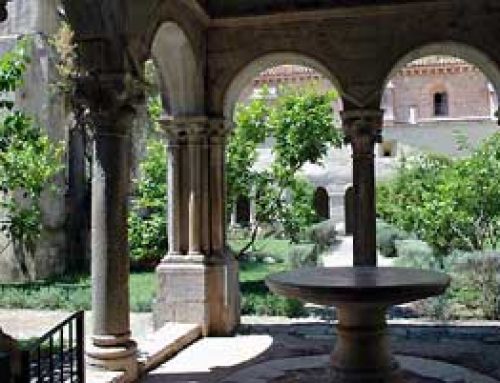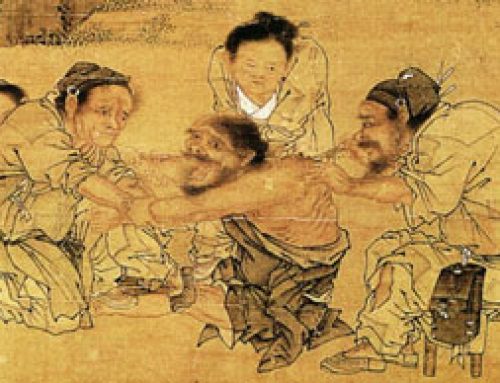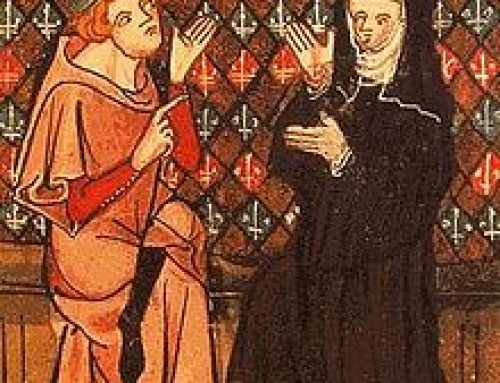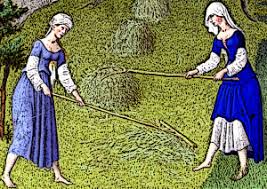
Two women raking straw in a field (Tres Belles Heures du duc de Berry)
If you’re a teacher, parent, or day camp counselor thinking of spending a week or so on the Middle Ages, here’s some ideas other people have found useful:
Costumes:
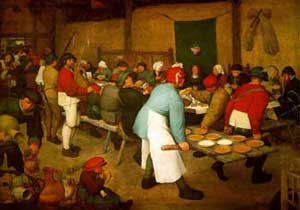
Brueghel painting of a wedding, as an example of medieval clothing
For girls, a long loose colored dress (to her ankles), with another long dress or robe over it, belted at the waist. She might carry a small bag, keys, and a knife hanging from her belt. She could wear leather boots, or sandals. For boys, a big colored T-shirt (it should reach to his knees), belted at the waist, with colored tights under it, and leather shoes or boots (not sneakers). Both boys and girls might wear a wool cloak with a hood, if it was cold.
More on Medieval Clothing
Food:
In the Middle Ages, a feast generally meant roasted meat; you might settle for roasted chicken, unless you are prepared to roast a pig. With it, you could have barley bread, or a round French country bread, and grilled or stewed vegetables: leeks, onions, parsnips, and turnips especially. Turnips sliced thin and fried like potato chips might go over better, or roasted like baked potatoes. Lentil soup was also still common. For lunch, people often had thick slices of bread soaked in olive oil, toasted with garlic or onions and salt. For dessert, apples (fresh or dried) or pears, or cherries if they’re in season, and maybe a slice of Swiss cheese or nuts, or some honey on a slice of bread.
More about Medieval Food
Activities:
Bibliography and further reading about the Middle Ages:
How Would You Survive in the Middle Ages, by Fiona MacDonald and David Salariya (1997). Funny pictures and text convey real history about the Middle Ages.
Knights & Castles: 50 Hands-On Activities to Experience the Middle Ages, by Avery Hart and Paul Mantell (1998). Part of a series of good hands-on activities books.
Medieval Life (DK Eyewitness Books 2004). Not a lot of details, but a good place to start.
You Wouldn’t Want to Be in a Medieval Dungeon!, by Fiona MacDonald (2003). Funny tone, but real information. My kids and their friends liked it.
